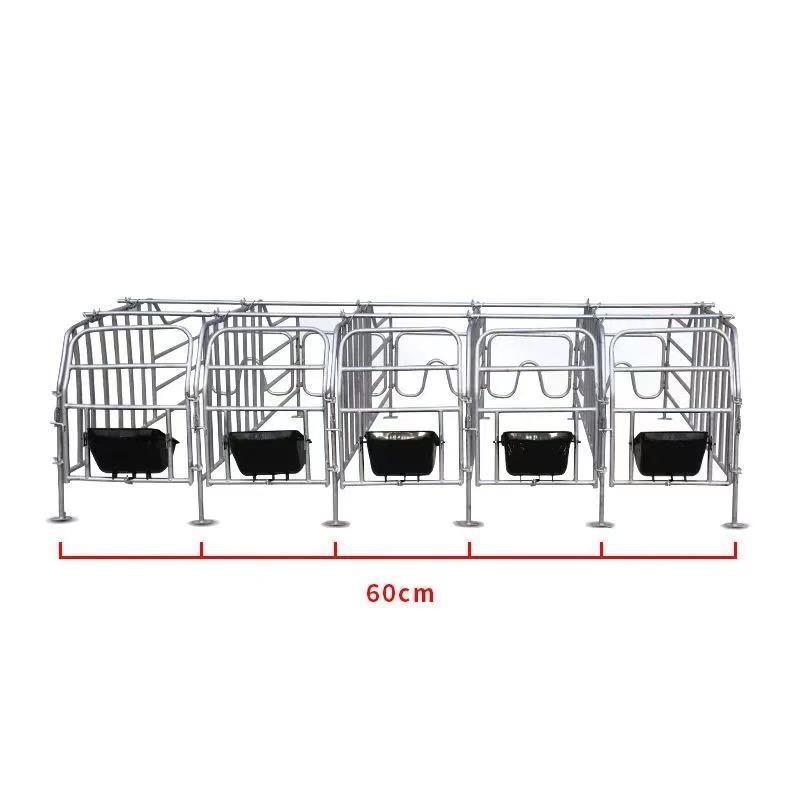layer chicken cages
Dec . 19, 2024 00:56 Back to list
layer chicken cages
Exploring Layer Chicken Cages Benefits and Considerations
Layer chicken cages have become a cornerstone of modern poultry farming, particularly for commercial egg production. As the demand for eggs continues to rise globally, the efficiency and effectiveness of layer chicken cages play a crucial role in meeting this need. In this article, we will explore the benefits of layer chicken cages, the considerations that come with their use, and the future of poultry farming.
What Are Layer Chicken Cages?
Layer chicken cages are specifically designed enclosures where hens are kept for the purpose of egg production. Unlike traditional free-range systems, these cages are typically arranged in multi-tiered structures that maximize space utilization while ensuring that each bird has access to food and water. The design often includes features such as sloped floors for egg collection, ventilation systems, and automatic feeders, which facilitate a highly efficient farming process.
The Benefits of Layer Chicken Cages
1. Space Efficiency One of the primary advantages of using layer cages is the optimal use of space. By stacking cages vertically, farmers can house a larger number of birds in a smaller footprint, making it possible to produce more eggs in a confined area. This is particularly beneficial in regions where land resources are limited.
2. Hygiene and Health Layer cages allow for improved hygiene compared to traditional farming methods. With the birds housed separately, the risk of disease transmission is reduced. Waste can be managed more effectively, which helps in maintaining a cleaner environment for the hens. Additionally, many modern cages integrate automatic cleaning systems that further enhance biosecurity.
3. Production Efficiency Layer chicken cages generally lead to enhanced productivity. The controlled environment ensures that birds receive adequate nutrition, lighting, and ventilation, which optimizes their egg-laying capacity. This results in higher egg yields and can dramatically improve the profitability of poultry operations.
4. Labor Savings The design and automation of layer cages contribute to reduced labor costs. Farmers can manage a large number of hens with fewer workers due to the efficiency of feeding, watering, and egg collection systems. This reduction in labor demands helps farmers allocate resources more effectively.
layer chicken cages

Considerations for Layer Chicken Cages
While layer chicken cages provide numerous advantages, there are also important considerations that farmers must keep in mind.
1. Animal Welfare One of the most significant concerns surrounding layer cage systems is animal welfare. Critics argue that confining hens to cages restricts their natural behaviors, such as nesting and foraging. As a result, there has been a growing demand for higher welfare standards, leading some farms to transition to cage-free systems. Farmers must balance productivity with ethical considerations, and many are exploring options that meet both demands.
2. Regulatory Standards Different countries and regions have varying regulations regarding the use of layer chicken cages. For instance, some places have introduced laws that require larger cage sizes or a transition to cage-free environments. Farmers need to stay informed about these regulations to maintain compliance and avoid potential penalties.
3. Consumer Preferences Modern consumers are increasingly concerned about how their food is produced. There is a rising trend toward purchasing eggs from cage-free or free-range sources. Poultry producers must consider changing consumer preferences, as they can significantly impact market demand and pricing strategies.
The Future of Layer Chicken Cages
The future of layer chicken cages will likely be shaped by advancements in technology and changing societal values. Innovations such as improved cage designs that promote better animal welfare, automation in feeding and monitoring, and sustainable farming practices can enhance the appeal of layer cages. Additionally, as consumer preferences evolve, the industry may find a way to reconcile the efficiency of layer cages with ethical animal care.
In conclusion, layer chicken cages offer many benefits, including space efficiency, hygiene, and production effectiveness. However, it is essential for producers to consider animal welfare, comply with regulations, and adapt to consumer preferences. By doing so, they can ensure a sustainable and responsible future for poultry farming in an ever-changing landscape.
-
High Performance Exhaust Fan – Efficient Ventilation Solutions for Home
NewsJun.10,2025
-
High-Quality Gestation Pen for Sows Durable Mobile Pig Pen & Simple Pig Pen Solutions
NewsJun.10,2025
-
High Quality Rabbit Cage Double Tier Designs & Welded Wire Mesh Supplier
NewsJun.10,2025
-
Floating Fish Feed Machine - High Efficiency Floating Fish Feed Extruder for Small Scale Production
NewsJun.10,2025
-
Premium Poultry Housing Solutions Mobile & Commercial Free Range Options
NewsJun.10,2025
-
Industrial FRP Fans Corrosion-Resistant Blades & Centrifugal Systems
NewsJun.09,2025






